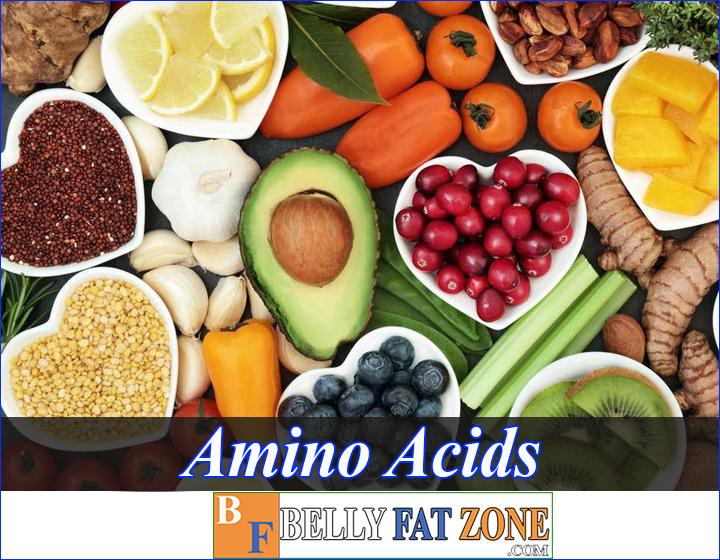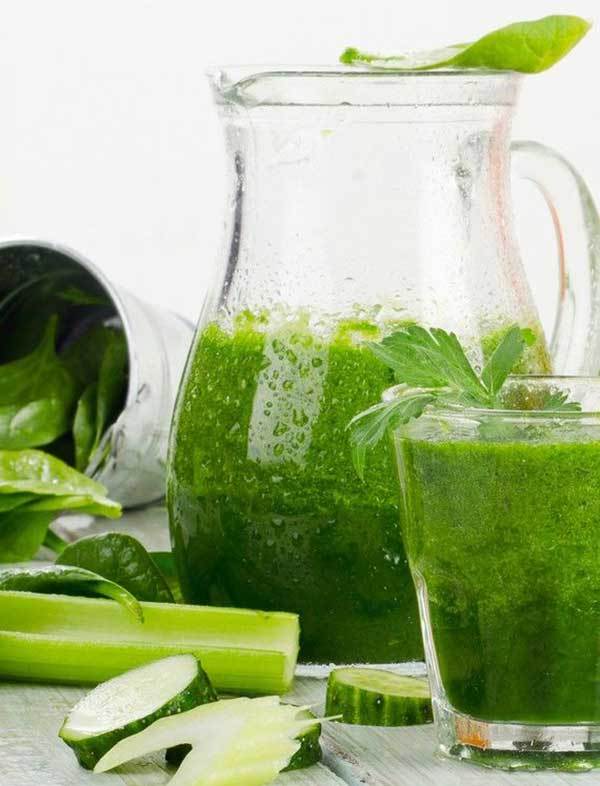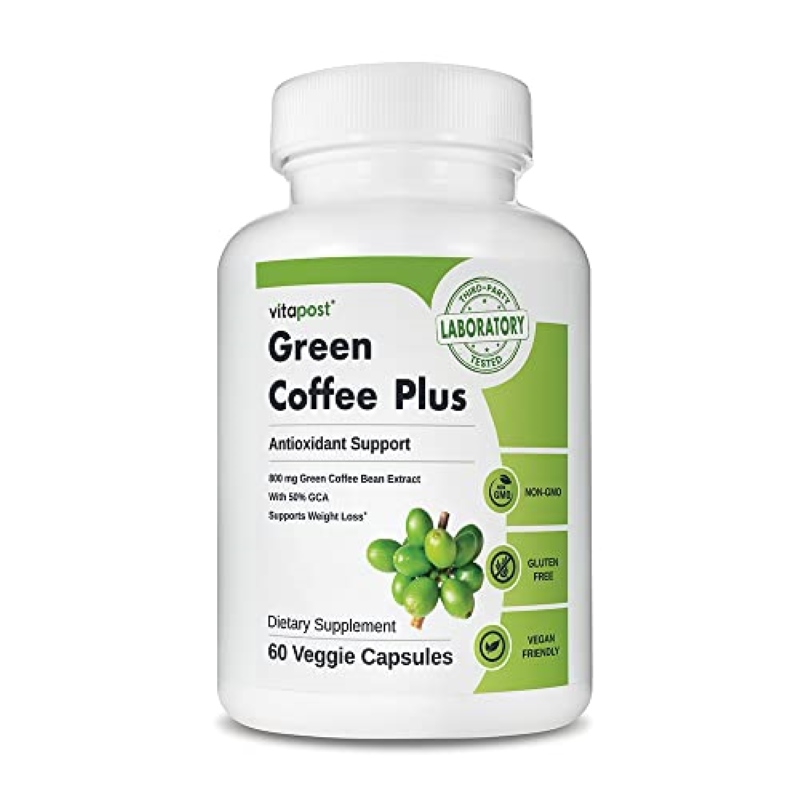If you are a regular nutritionist, you also know that nuts are foods with many nutrients that are useful for our health. Many of the nuts' benefits have been studied and given by nutritionists, encouraging people to increase the nut content in their diets every day.
Nuts contain a lot of vitamins and micronutrients essential to support our metabolic system.

In this article, we invite you to learn about a seed originating from South America, Bolivia. It is quinoa.
Quinoa is a type of “superfood” with extremely high nutritional content and has recently received a lot of attention.
What is so special about this grain from South America that makes nut believers unable to ignore it?
Let's join Bellyfatzone to learn about quinoa seeds – the “seed pattern” of Bolivia.
What is quinoa?
Quinoa, whose international name is quinoa (pronounced keen-wah or ke-NO-ah), is among the world's most popular health “super seeds.”

Quinoa is a flowering plant in the amaranth family, and the seeds of this annual plant, or quinoa, are the product we use often.
Quinoa has the same composition as wheat and rice when cooked. Due to being gluten-free food, quinoa is suitable for the diet of people with celiac disease, wheat allergy, or gluten-free.
The history of quinoa
Quinoa has been grown and consumed around 4000 years ago by residents of the Andean, Peru, Bolivia, and Chile regions.
However, some archaeological evidence suggests that quinoa has a history of up to … 7000 years. During the war between the Spaniards and the Incas, quinoa served as the “gold” food that powers the Inca warriors.
Throughout a long history, quinoa has had significant changes in shape: flower heads are reduced, stem and seed sizes increased, and darker pigmentation, …
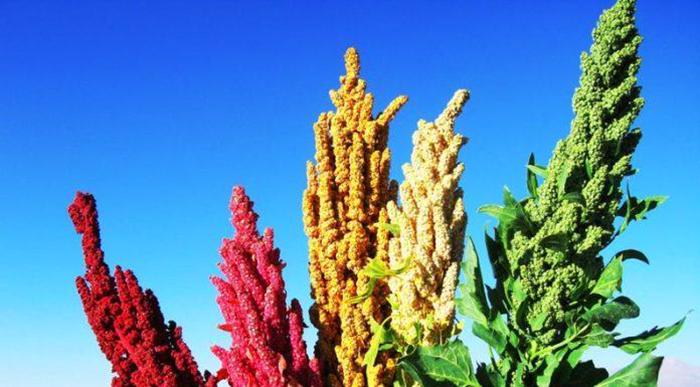
Although quinoa is grown in many parts of the world today, most quinoa seeds still come from Bolivia and Peru.
In Bolivia, quinoa is known as the “mother seed” or “seed sample.” The United Nations has even called 2013 the “International Year of Quinoa” because of its valuable benefits and potential to fight hunger.
Quinoa nuts
It is estimated that there are about 100 types of quinoa, but the three most popular are red, black, and white. Another variety carries a mixture of all 3 colors.
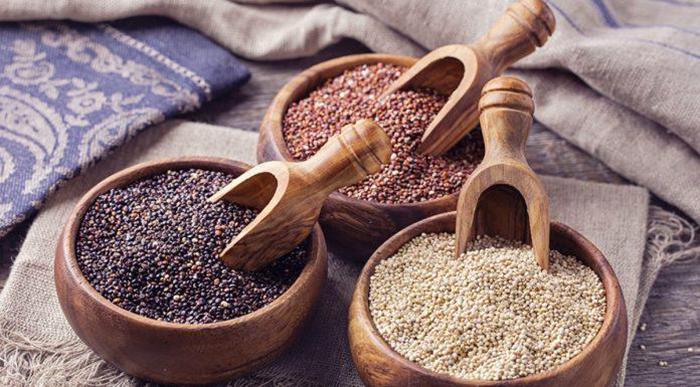
- White quinoa: The most common, also known as ivory quinoa.
- Red quinoa: This grain, when cooked, will retain its shape better than the white quinoa. Red quinoa is a good ingredient in cold salads.
- Black quinoa: has a sweeter taste than white quinoa.
Of the three types above, black quinoa has the lowest fat content, while the omega-3 fatty acid and carotene content is the highest.
The vitamin E content in red and black quinoa is almost double that of white quinoa. Studies also show that the darker the seed color, the higher its antioxidant capacity.
Quinoa seeds can be rolled flakes or pulverized for use in cooking.
Nutritional value of quinoa seeds
This food is so hot because it is very nutritious with a richer amount of vitamins, minerals, protein, fiber, and healthy fats than other grains. You can see the detailed nutritional composition of quinoa in the table below:
| Nutritional information | Values per 185 g |
| Calories | 222 kcal |
| Fat | 4 g |
| Fiber | 5 g |
| The protein | 8 g |
| Manganese | 2 mg (58% DV) |
| Magnesium | 118 mg (30% DV) |
| Phosphorus | 281 mg (28% DV) |
| Folate | 78 mcg (19% DV) |
| Copper | 4 mg (18% DV) |
| Iron | 8 mg (15% DV) |
| Thiamine (vitamin B1) | 2 mg (13% DV) |
| Zinc | 2 mg (13% DV) |
| Riboflavin (vitamin B2) | 2 mg (12% DV) |
| Potassium | 318 mg (9% DV) |
| Selenium | 2 mg (7% DV) |
| Vitamin E | 2 mg (6% DV) |
Uses of quinoa
Support weight loss
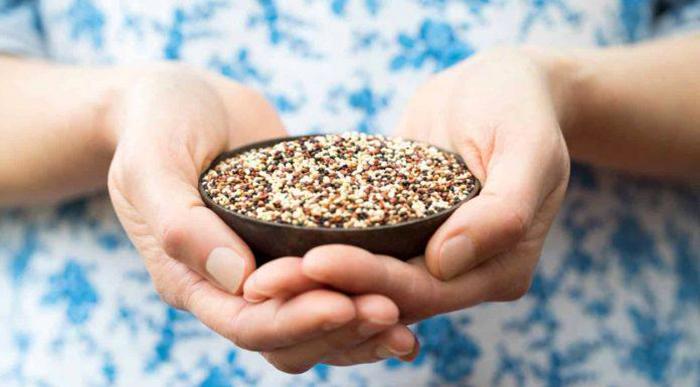
Quinoa is a rich source of fiber. Compared to other grains and seeds, the fiber content of quinoa is much higher.
Although most of the fiber in quinoa is insoluble, this can help people who are losing weight as it helps prevent hunger.
In particular, quinoa contains 20-hydroxyecdysone (a compound that works to control weight).
Research shows that this compound helps to burn more calories, thus promoting weight loss. It also causes the user to absorb less fat from the diet.
Read more: What Are Flax Seeds Benefits? Really Help for Weight Loss, Things You Need To Know
Prevent osteoporosis
From the nutritional value table of quinoa that Bellyfatzone provides, you can easily see that this nut is rich in magnesium. Magnesium has excellent effects on bone health.
Besides, the abundant protein in quinoa makes the bone structure develop healthily.
More importantly, quinoa contains all 9 essential amino acids that the body cannot produce on its own, helping to prevent muscle loss in the elderly and athletes.
Protect heart health

In addition to the insoluble fiber is the “lifesaver” in your weight loss process, quinoa's soluble fiber source helps to protect the heart effectively.
When soluble fiber combines with bile acids in the liver, a gel-like binder is excreted through the intestines. Your liver uses some of the cholesterol in your body to make these bile acids.
Put, when you eat quinoa, the lower the “bad” cholesterol, the lower your risk of atherosclerosis and coronary artery disease.
Prevent cancer
Harvard University reports that a single bowl of quinoa in your daily meal can save your life. What is the basis of this statement?
That's because quinoa is super rich in antioxidants – compounds that can counteract the effects of free radicals and other harmful substances that cause cancer. So if you want to prevent cancer from now on, try adding quinoa to your meals.
Skin beauty
Quinoa is known to inhibit the enzyme tyrosinase, which helps prevent pigmentation and dull skin. Quinoa also contains many B vitamins – nutrients that help prevent the appearance of age spots on the skin and limit melanin accumulation in the skin.
The vitamin B3 in quinoa (or niacinamide) treats acne by soothing red areas caused by acne. And riboflavin in quinoa (vitamin B2) will increase skin elasticity as well as reduce sebum production.
Besides, vitamin A – a “miracle” that slows down the aging process is also present in quinoa's nutritional composition. Vitamin A helps skin look younger and less wrinkled.
In addition to the great uses mentioned above, the scientific evidence also shows that quinoa seeds have anti-inflammatory effects, prevent diabetes, high blood pressure, support the treatment of anemia, and keep hair healthy. Dandruff, …
How to use and preserve quinoa seeds
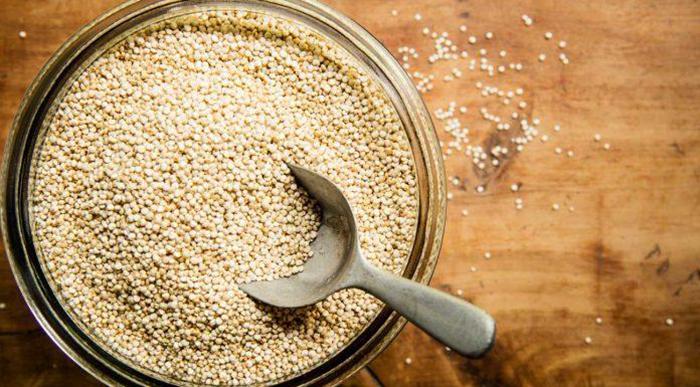
Raw quinoa has a rather thick outer shell. Normally, this coating will help protect the seeds from insects and bird attacks.
However, we have to remove this shell before eating because it contains bitter saponins. Usually, when we buy quinoa in the store, its shells are pre-processed. But if you want to know how to prepare raw quinoa seeds, you can refer to the instructions below:
- Wash the quinoa thoroughly, soak it with water for 2 hours.
- Change the water, soak it again, and rinse the seeds.
- Wash until you no longer see the bubbles, then remove the seeds. This process will remove residues of pesticides, saponins, and bitter taste in the seeds.
Quinoa seed cooking is similar to cooking grains like rice, buckwheat, or barley. You can stew quinoa seeds to make porridge, soups or add them to salads or baked goods.
How to cook quinoa seeds:
- Simmer the quinoa seeds in 1: 2 water for about 20 minutes.
- When the seeds become translucent and slightly clear, the shells crack a little, turn off the heat.
- Cooked quinoa seeds should not be left for more than 2 hours at room temperature.
How to roast quinoa seeds:
- Pour the seeds into a pan, roast over low or medium heat.
- Stir continuously for 5 minutes and then turn off the heat.
The best way to store quinoa seeds is to put them in a box with a lid, cover, and place in a cool, dry place. This method can keep the seeds fresh for many consecutive months, even more than 1 year.
Some notes when using quinoa
If you eat too much, you may experience digestive problems.
Since quinoa seeds are rich in fiber, symptoms such as bloating, bloating, or diarrhea can occur when consuming large amounts of quinoa.
Besides, you should consult your doctor if the quinoa you take contains saponins. Some sources indicate that saponins can damage the intestinal tract.
Kidney stone problem
Quinoa contains oxalic acid. This acid can be excreted in the urine but has the ability to bind calcium and form kidney stone disease.
In case you have a history of kidney stones, avoid quinoa seeds, or see your doctor for advice.
However, oxalic acid binds with calcium to form oxalate salts deposited in the kidneys only under certain conditions. You can also prevent the risk of kidney stones by drinking plenty of fluids.
Bonus Benefits of Quinoa (Backed by Science)
Do not forget to visit the health section of the Bellyfatzone regularly for more useful information.
View more:
- Vitamin E Benefits And The Most Effective Way To Use It
- What Is Hemp Protein? How to Use It Effectively?
- What Are Vitamins For Glowing Skin And Support Body Weight Control?
Hopefully, the above information can answer your questions about quinoa. Please share your opinion with Bellyfatzone after using this nut!
